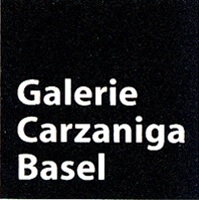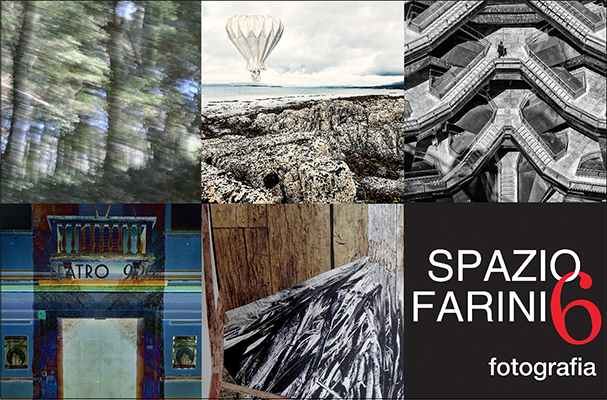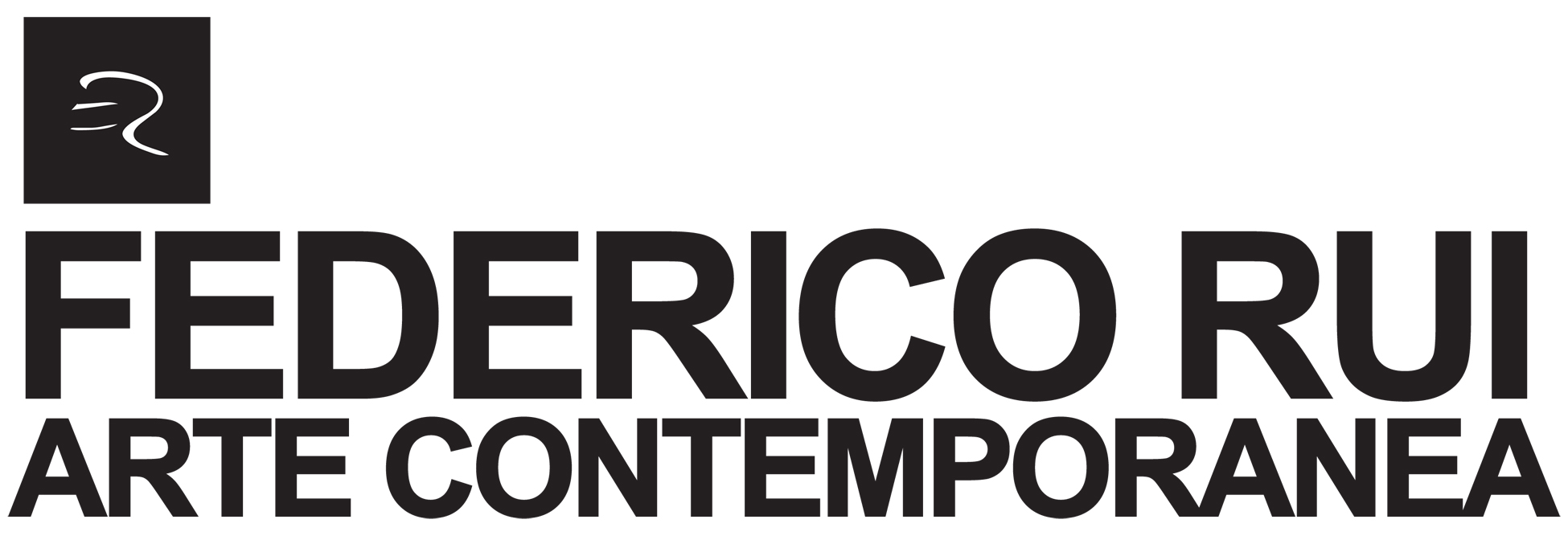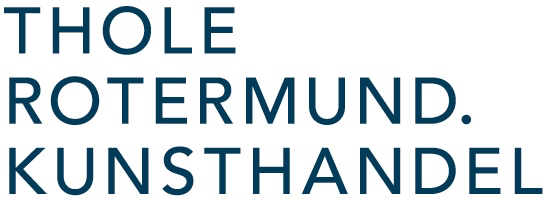Galerie Carzaniga

Galerie Carzaniga
Works
Julius Bissier
Monti 60.7i.1960, 1960, Egg oil tempera on gold leaf on linen, 21,5 x 26,5 cm, Signed, dated, titled lower left: Monti 60.7i/ Julius Bissier, Fr. 29'000.--
Sam Francis
Eight, 1986, Acrylic on solid parchment, 45,7 x 30,8 cm, Signed, dated and titled on the back: Sam Francis 1986 Eight, Fr. 78'000.--
Mark Tobey
Untitled, 1961, Tempera on paper, 33,5 x 25 cm, Fr. 115'000.--
Max Liebermann
Bildnis Lola Leder - Kopfstudie, 1920 Oil on canvas, 42 x 36,5 cm, Signed, dated upper left: M Liebermann 1920, Fr. 18'000.--
Francis Picabia
Untitled, n.y., Pencil drawing on paper, 17,5 x 13 cm LM, Signed lower left, Fr. 14'500.--
Walter Kurt Wiemken
Segen der Erde (Gesamtentwurf), 1931 Tempera, gold bronze and ink (pen) on paper, 58,5 x 75,5 cm, Inscription bottom right with tempera: Mosaik/Segen der Erde. NLST: 1931/1, Fr. 28'000.--
Christopher Lehmpfuhl
Winterlicht am Bodemuseum, 2020, Oil on canvas, 100 x 160 cm, Fr. 19'000.--
Banksy
Welcome Mat, 2019, Hand stitched welcome mat with fabric from life jackets, Edition 1000 copies, Copy 978/1000, 40 x 60 cm, Fr. 6'800.--
Wopart virtual fair location
Galerie Carzaniga
12 Nov 2020
2020 Fiera Virtuale, Gallerie, Padiglione 1
Comments Off on Galerie Carzaniga
Leggi tutto
Galerie Carzaniga
Galerie Carzaniga
Works
Wopart virtual fair location
galleria SPAZIOFARINI6 fine art photography

Via Carlo Farini 6, 20154 Milano ITALY info@spaziofarini6.com www.spaziofarini6.com
Catalog of the fair here: https://www.sfogliami.it/fl/211097/5muhh6zz3z9p1g2pe47sgp1huycm6pk
0039 0262086626
info@spaziofarini6.com
https://www.sfogliami.it/fl/211097/5muhh6zz3z9p1g2pe47sgp1huycm6pk
galleria SPAZIOFARINI6 fine art photography
Founded in 2008 by Giovanna Lalatta, SPAZIOFARINI6 is a contemporary art gallery dedicated entirely to limited edition author photography. It offers a curated and exclusive selection of works of art for sale, together with a complete range of services for customers who wish to enrich their research in the world of photography. In fact, in addition to the classic exhibition, promotion and sale of photographic works of art, the gallery also offers a wide range of programs aimed at widening the dialogue on the role of photography in our society, including conferences, workshops, meetings with the author, book presentation, and also promotes artistic education for children and adolescents, building visual literacy with the aim of involving several new audiences. SPAZIOFARINI6 is a large exhibition space in the center of Milan, but also exhibits its artists all over the world by participating in fairs and international exchanges with other galleries.
Works
Antonella Sacconi
The photographer Antonella Sacconi’s "Homo Faber" project, runs through an observation path of structures and details in contemporary architectures spread throughout the world. Her classical education allows her to find the "Ancient" in the "New" that feeds on those classical principles and internalizes them even where it seems to break every pattern and appear disharmonic. The author uses black and white because she wants the eye to focus on the lines and the structures rather than on the colour. She strips his buildings leaving only “naked shapes” (nude forme).
The use of a human figure within her compositions, never in the foreground, sometimes reduced to a silhouette but perfectly inserted in the work, represents Man as the Homo Faber, at the same time architect and user of what he creates. These "Nude Forme" with their outlined appearance, look back at the Ancient which is always alive and become a red thread that guides and help us remind our roots and who we are.
Pier Paolo Fassetta
Everything goes back to its origins. Lost the traces of ancient civilizations, are the remains of architecture without history, built with photographic images recomposed to represent the vitality of nature, shaped by man, for inhabitants of mysterious places. Immersed in the density of a wild nature devoid of any trace of human life, they mark new presences in the contemplation of their decay. The few visible remains, returned by the photographic document, torn and reassembled, dry up over time, evoking for the remaining parts, the effort of living in a harsh confrontation between man and nature. The lack of a real archeology makes these inexplicable artifacts buried in the disturbing myth, where everything has the flavor of returning to a time where shrines were erected to benevolent gods. Photography helps us to go back to the origins by becoming a constructive form, losing its intrinsic communicative function to become part of a system of aggregation of primordial utility.
Gianna Spirito
The echo of the architecture of the past that cyclically returns to mind and sight, is the subject of the work proposed here. Instead of the patina of the antique, a new film will highlight the already known connotations, highlighting the rigidity of the forms, the repetition of the elements but with a more current and engaging emotional filter, almost as if they were dream architecture. In fact, Dreams says the sign that rises over the photo of cinema-theater of Tresigallo. The artist projects us into her own world by superimposing the solid textures and the suggestions of color and graphics, leading to a reinterpretation of the architecture of the past.
Beba Stoppani
St Francis’s Wood is a series of photographs taken from 2010 to 2012 at a holy place that has always aroused devotion, located near Assisi, where St Francis and his brethren isolated themselves in prayer in a forest of holm oaks. St Francis’s Wood is not only a spiritual journey seeking to explore the natural world, it is also the manifestation of the spoliation of the aesthetic gaze. In her photographs, Stoppani progressively goes beyond the most mimetic aspects of the woods in order to isolate the vision, create transparencies, bundle things together, dissolve light effects, find aesthetic forms, draw mandalic figures and represent the present structures of the trees in a continuous dialogue between interior and exterior. The woods extend both upwards and downwards, vanishing into their complex inner life and obliging spectators to concentrate on contemplation.
Wopart virtual fair location
SPAZIOFARINI6
12 Nov 2020
2020 Fiera Virtuale, Gallerie, Padiglione 4
Comments Off on galleria SPAZIOFARINI6 fine art photography
Leggi tutto
SPAZIOFARINI6 _ fine art photography

Via Farini 6, 20154 Milano
Istagram: spaziofarini6
www.spaziofarini6.com
+390262086626
info@spaziofarini6.com
https://www.sfogliami.it/fl/213181/2579k882ms4q55z9psrg5ykdtyuqfd2#page/1
SPAZIOFARINI6 _ fine art photography
Founded in 2008 by Giovanna Lalatta, SPAZIOFARINI6 is a contemporary art gallery dedicated entirely to limited edition author photography. It offers a curated and exclusive selection of works of art for sale, together with a complete range of services for customers who wish to enrich their research in the world of photography. In fact, in addition to the classic exhibition, promotion and sale of photographic works of art, the gallery also offers a wide range of programs aimed at widening the dialogue on the role of photography in our society, including conferences, workshops, meetings with the author, book presentation, and also promotes artistic education for children and adolescents, building visual literacy with the aim of involving several new audiences. SPAZIOFARINI6 is a large exhibition space in the center of Milan, but also exhibits its artists all over the world by participating in fairs and international exchanges with other galleries.
Works
ANTONELLA SACCONI
The photographer Antonella Sacconi’s "Homo Faber" project, runs through an observation path of structures and details in contemporary architectures spread throughout the world. Her classical education allows her to find the "Ancient" in the "New" that feeds on those classical principles and internalizes them even where it seems to break every pattern and appear disharmonic. The author uses black and white because she wants the eye to focus on the lines and the structures rather than on the colour. She strips his buildings leaving only “naked shapes” (nude forme). The use of a human figure within her compositions, never in the foreground, sometimes reduced to a silhouette but perfectly inserted in the work, represents Man as the Homo Faber, at the same time architect and user of what he creates. These "Nude Forme" with their outlined appearance, look back at the Ancient which is always alive and become a red thread that guides and help us remind our roots and who we are.
FAUSTO MELI
A photograph starts off as a real scenario which, through a singular sequence of folds in time and light, becomes a poetic image on paper. Conversely, an origami figure starts life as a piece of paper which, through a remarkable sequence of folds, creates a three-dimensional poetic interpretation of the chosen subject. This project is aimed at weaving together these two visions, which start from distant viewpoints, but end up fusing into a new photographic image where the artefact is laid bare. In this project, I have taken still-life photographs of origami folded with Japanese (washi) paper using light that evokes the mood of the backdrop photograph, shot separately. I used the same kind of washi paper for both the origami and the final photographic print, to underline the relationship between the two worlds. The title of the work alludes to a childhood flight of fancy through the imaginary voyage made by a folded piece of paper, with the term voyage alluding to a sense of discovery.
PIER PAOLO FASSETTA
Everything goes back to its origins. Lost the traces of ancient civilizations, are the remains of architecture without history, built with photographic images recomposed to represent the vitality of nature, shaped by man, for inhabitants of mysterious places. Immersed in the density of a wild nature devoid of any trace of human life, they mark new presences in the contemplation of their decay. The few visible remains, returned by the photographic document, torn and reassembled, dry up over time, evoking for the remaining parts, the effort of living in a harsh confrontation between man and nature. The lack of a real archeology makes these inexplicable artifacts buried in the disturbing myth, where everything has the flavor of returning to a time where shrines were erected to benevolent gods. Photography helps us to go back to the origins by becoming a constructive form, losing its intrinsic communicative function to become part of a system of aggregation of primordial utility.
GIANNA SPIRITO
The echo of the architecture of the past that cyclically returns to mind and sight, is the subject of the work proposed here. Instead of the patina of the antique, a new film will highlight the already known connotations, highlighting the rigidity of the forms, the repetition of the elements but with a more current and engaging emotional filter, almost as if they were dream architecture. In fact, Dreams says the sign that rises over the photo of cinema-theater of Tresigallo. The artist projects us into her own world by superimposing the solid textures and the suggestions of color and graphics, leading to a reinterpretation of the architecture of the past.
BEBA STOPPANI
St Francis’s Wood is a series of photographs taken from 2010 to 2012 at a holy place that has always aroused devotion, located near Assisi, where St Francis and his brethren isolated themselves in prayer in a forest of holm oaks. St Francis’s Wood is not only a spiritual journey seeking to explore the natural world, it is also the manifestation of the spoliation of the aesthetic gaze. In her photographs, Stoppani progressively goes beyond the most mimetic aspects of the woods in order to isolate the vision, create transparencies, bundle things together, dissolve light effects, find aesthetic forms, draw mandalic figures and represent the present structures of the trees in a continuous dialogue between interior and exterior. The woods extend both upwards and downwards, vanishing into their complex inner life and obliging spectators to concentrate on contemplation.
Wopart virtual fair location
SPAZIOFARINI6
12 Nov 2020
2020 Fiera Virtuale, Gallerie, Padiglione 4
Comments Off on SPAZIOFARINI6 _ fine art photography
Leggi tutto
Federico Rui Arte Contemporanea

Federico Rui Arte Contemporanea
Works
Alfio Giurato
Echi, 2016, oil on canvas, cm 150x150
Stefano Bosis
Corrispondences, 2019, oil on canvas, cm 120x90
Andrea Mariconti
Aleifar Kanon, 2015, oil, ash and motor oil on canvas, cm 50x80
Luca Moscariello
Puzzle n. 20, 2020, oil and enamel on board, 50x50 cm
Barbara Nahmad
Oltremare, 2019, oil on canvas, cm 110x120
Sergio Padovani
Il Poeta che annega, 2019, oil, bitumen and resin on canvas, cm 70x100
Wopart virtual fair location
federicorui
12 Nov 2020
2020 Fiera Virtuale, Gallerie, Padiglione 3
Comments Off on Federico Rui Arte Contemporanea
Leggi tutto
Federico Rui Arte Contemporanea

VIA FILIPPO TURATI 38 - 20121 MILANO
+39 392 4928569
federico@federicorui.com
http://www.federicorui.com/
Federico Rui Arte Contemporanea
Federico Rui began his career in a Milanese gallery in 1995, thus learning the profession of gallery owner in the field. After different experiences in a publishing house and at the Accademia di Brera, in 2002 he founded the Pittura Italiana Gallery. Federico Rui Arte Contemporanea was born in 2010 and in 2012 the space in Turati street, where the gallery is still stands, was inaugurated with a retrospective on Aligi Sassu on the centenary of his birth. The gallery specializes in promoting emerging and mid-career artists, with a particular predilection for painting. He has participated since 2004 in the most important national and international art fairs and collaborates with the major Italian auction houses. He has organized and took part in hundreds of national and international exhibitions among which in London, Brussels, Genoa, Venice, Cape Town, etc. publishing several monographs of artists for Skira and Allemandi. Federico Rui is member of Angamc (Italian Association of Gallery).
Works
Alfio Giurato
Echi, 2016, oil on canvas, cm 150x150
Stefano Bosis
Corrispondences, 2019, oil on canvas, cm 120x90
Andrea Mariconti
Aleifar Kanon, 2015, oil, ash and motor oil on canvas, cm 50x80
Luca Moscariello
Puzzle n. 20, 2020, oil and enamel on board, 50x50 cm
Barbara Nahmad
Oltremare, 2019, oil on canvas, cm 110x120
Sergio Padovani
Il Poeta che annega, 2019, oil, bitumen and resin on canvas, cm 70x100
Giuseppe Bergomi
Ila, 2017, bronzo policromo cm 52 x 19,3 x 14x6
Daniele Galliano
Do you remember, 2019, oil and ink on paper, cm 150x350
Wopart virtual fair location
federicorui
12 Nov 2020
Gallerie, Padiglione 3
Comments Off on Federico Rui Arte Contemporanea
Leggi tutto
Artrust

Artrust
Works
Bengt Lindström
"Visage" by Bengt Lindström. This artwork is an acrylic on canvas. It is signed. The artwork dimensions are 38,00 cm x 46,00 cm.
Marianne Werefkin
"In riva al lago" by Marianne Werefkin, dated 1920. This artwork is pastel and gouache on paper. The artwork dimensions are 32,00 cm x 24,00 cm.
Italo Valenti
"Tirreno” by Italo Valenti, dated 1968. This artwork is an oil on canvas. It is signed. The artwork dimensions are 27,00 cm x 41,00 cm.
Niki De Saint Phalle
“Méchant méchant” by Niki De Saint Phalle, dated 1993. This artwork is a mixed technique and assembly on wood. Edition 245/250. It is signed. The artwork dimensions are 43,00 cm x 42,00 cm.
Nevercrew
“Black machine” by Nevercrew, dated 2015. This artwork is a spray and stencil on paper. It is signed. The artworks dimensions are 70,00 cm x 70,00 cm.
Banksy
“Happy Choppers” by Banksy, dated 2003. This artwork is a colored serigraph on paper. It is signed. The artwork dimensions are 70,00 cm x 50,00 cm. Accompanied by the Pest Control Certificate.
Wopart virtual fair location
Artrust
Artrust
Works
Wopart virtual fair location
Thole Rotermund Kunsthandel

Thole Rotermund Kunsthandel, Koppel 38, 20099 Hamburg, Germany
+49 40 688 76 988
info@rotermund-kunsthandel.de
https://www.rotermund-kunsthandel.de
Thole Rotermund Kunsthandel
Hamburg-based Thole Rotermund Kunsthandel specializes in works on paper, with an expert focus on German Expressionism and classical modern art. The gallery is one of the leaders in its field and has built up an important client base Europe-wide. It offers highly professional advisory services designed to allow collectors to buy or sell artworks with confidence and discretion. Art- historical expertise, an eye for quality and close attention to detail are essential assets in helping to build up, manage and maintain collections both private and public. Original works like drawings, gouaches, watercolours and unique prints of exceptional importance by Alexej von Jawlensky, August Macke, Paul Klee and Emil Nolde are just some of the highlights the gallery has in store for discerning collectors.
Works
Alexej von Jawlensky
Bouquet à l‘heure bleu, 1937, Oil on cardboard, signed and dated lower left: 'A. Jawlensky 37', 21.7 x 13.4 inch
Paul Klee
Two small watercolours, 1916, Watercolour and pen and ink on two-parted french Ingres, mounted on cardboard, signed upper right: 'Klee', 3.2 x 7 inch (7.5 x 11.1 inch)
August Macke
Portrait Helmuth Macke, 1909/10, Oil on linen-finished cardboard, mounted on cardboard, 8.4 x 6.4 inch
Emil Nolde
Yellow and red sunflowers, ca. 1948, Watercolour on Japan paper, signed lower left: ‚Nolde.‘, 13.7 x 18.4 inch
August Macke
Under the archway (Tunis), 1914, Charcoal and stumping on wove paper, 9.4 x 7.3 inch
Emil Nolde
Double portrait, 1937, Woodcut on firm wove paper, signed lower right: ‚Emil Nolde.‘, 12.4 x 9.1 inch (16.4 x 11.7 inch)
August Macke
Village with a church by the lake, 1914, Charcoal and stumping on wove paper, inscribed and dated on the verso: 'Hilterfingen 1914', 6.8 x 4.1 inch
Alexej von Jawlensky
Variation: snowflakes, 1915, Oil on linen textured paper, mounted on cardboard, monogramed lower left: 'A.J.', 13.8 x 10.6 inch
Wopart virtual fair location
Thole Rotermund Kunsthandel
11 Nov 2020
2020 Fiera Virtuale, Gallerie, Padiglione 1
Comments Off on Thole Rotermund Kunsthandel
Leggi tutto
